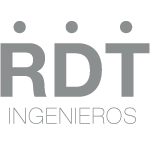-
RDT will participate in the EASYDC project promoted by the Horizon Europe development and innovation programme.
-
RDT will play a leading role with its solutions in numerical simulation and photonics and electronics developed in its Centres of Excellence (CoE).
-
The project aims to develop HVDC cables with voltages above 525 kV.
RDT has been selected to participate in the EASYDC project promoted by the European Union (EU) within the framework of the Horizon Europe programme. The purpose of the project is to develop HVDC high-voltage direct current cables capable of operating at voltages above 525 kV. The project is scheduled to start at the end of 2024.
RDT will play a leading role in this innovative long-distance electrical transmission project. The Thermal Simulation & Fluid Dynamics and Photonics & Electronics CoE will contribute all the expertise of their teams in numerical simulation and monitoring of critical assets using advanced photonics, respectively. In addition to RDT’s CoE, the consortium is made up of 9 other pioneering companies from the energy sector and recognised academic institutions.
These new HVDC cables, used for power transmission over long distances and which would be capable of operating at voltages in excess of 525 kV, are designed to significantly reduce the carbon footprint. The scope of the project includes the manufacture and testing of a prototype cable, the development of partial discharge measurements using passive fibre optic sensors for ageing analysis in the 0 to 1 GHz range, and the creation of a new vibration sensor with integration into distributed temperature sensing (DTS) and distributed acoustic wave (DAS) solutions.
Predicting failures, increasing efficiency
With a budget of more than €5 million, this technology will be unique in monitoring long distance HVDC transmission corridors in the EU, planned beyond 2030 and will bring a huge breakthrough in terms of anticipation and operational efficiency as well as a direct impact on sustainable transmission solutions:
- It will achieve lower energy losses: the new HVDC cables are designed to minimise energy losses during transmission over long distances, improving overall system efficiency.
- Reduced environmental impact: the use of innovative materials and technologies in the manufacture of the cables will contribute to a lower carbon footprint, aligning with EU environmental policies.
- Increased monitoring efficiency: advanced monitoring systems based on sensors and cybersecure edge processing will enable continuous and accurate monitoring of the cables, facilitating preventive maintenance and rapid response to failures.
Following a research and documentation phase, real demonstrations are planned to be implemented in 2027 in Norway and Denmark. These demonstrations will allow assessing the performance of the new HVDC cables and monitoring technologies under real conditions, providing valuable data for future large-scale deployment in the EU.
Advanced techniques in asset monitoring
The project focuses on the manufacturing and testing of a prototype HVDC cable capable of operating at over 525 kV, designed to be efficient and with a reduced environmental impact, aligning with EU sustainability goals. In addition, advanced partial discharge measurement techniques will be developed using passive fibre optic sensors, operating in the 0 to 1 GHz range, to monitor cable ageing accurately.
A new vibration sensor will be developed and integrated into DTS and DAS solutions, enabling accurate vibration detection and combining this data with temperature and acoustic measurements to improve capacity calculation and fault location algorithms. Finally, specific algorithms driven by optical sensor data and perimeter cybersecurity systems will be developed, ensuring a fast and secure response to any detected anomalies. RDT’s Centre of Excellence in photonics and electronics will be key in these areas, driving the technological advancement and effective implementation of these solutions.
Space Charge mathematical prediction models
The contribution to the EASYDC project of the CoE on RDT numerical simulation is framed within the development of mathematical models for predicting the “Space Charge” phenomenon due to the existence of manufacturing defects in the insulation of this type of cable, which leads to deterioration during the time of use of the electrical insulation.
RDT develops in its numerical simulation CoE innovative solutions through fluid and/or thermal simulation for civil engineering, industrial engineering and architecture projects. Numerical simulation and CFD are essential tools in modern science and engineering, providing a deep understanding of physical and chemical phenomena, improving product and process design, contributing to safety and efficiency, and anticipating behaviour.
Project consortium
The EASYDC project will be developed between several pioneering and relevant entities in their sector. This consortium includes Nexans (global company in the cable and fibre optic industry), Ampacimon (network monitoring solutions), APsensing (developer and manufacturer of fibre optic distributed sensing technology products), ENERGINET (operator of the Danish national electricity and natural gas transmission grid), Statnett (operator of the Norwegian electricity grid), ZABALA (reference consultant in innovation strategy), the University of Cantabria, the University of Valladolid, BARBARA IoT (software platform aimed at managing professional IoT devices remotely and securely), GreenDelta (sustainability consultancy and software), ACE Energy Cluster Association as well as the two RDT CoEs.

About RDT
RDT is an innovative corporation whose field of activity is the development of advanced engineering projects, participating in projects with a high technological component where it provides flexibility in the outsourcing strategy of large companies. RDT’s mission is to provide engineering solutions that give our clients a competitive advantage based on efficiency, flexibility and reliability. Its main purpose: that engineers enjoy engineering.

